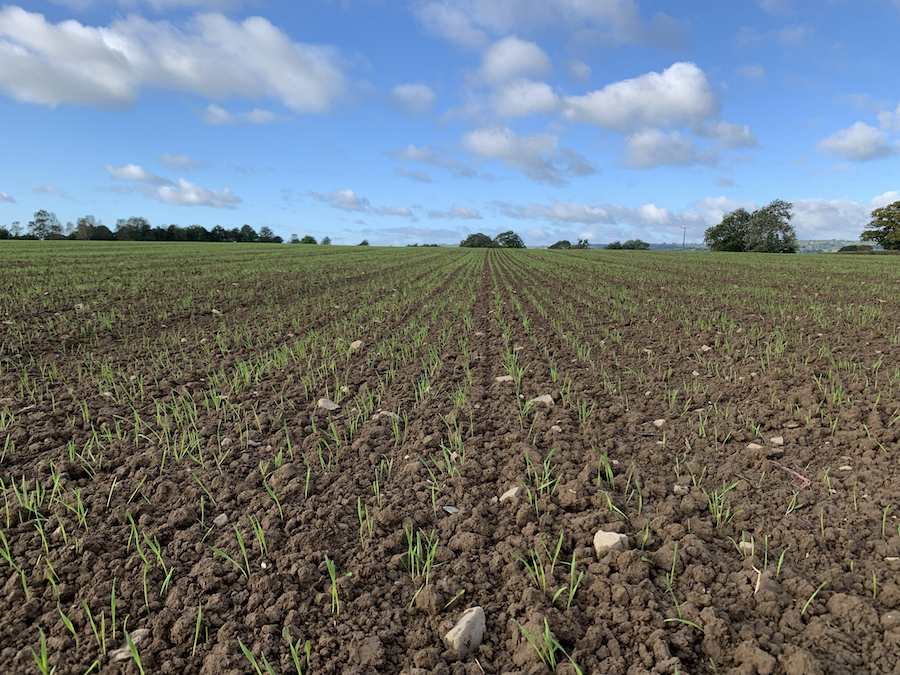Supporting winter crop resilience above and below ground
8th December 2023
As temperatures begin to decline, FMC crop nutrition product manager Chris Bond urges growers to build up their cereal crop resilience through foliar nutrition to help them withstand the winter.

Extreme weather conditions can make it incredibly challenging for autumn drilled crops to withstand the winter months. In light of this, Mr Bond explains that growers should be focusing their energy on building the resilience of their cereal crops now to endure potential extreme conditions.
“We can’t predict what weather we’re going to get so it’s crucial growers prepare their crops to be in with the best chance of withstanding whatever is thrown at them,” he says.
According to Mr Bond, in order to achieve good overall resilience, building strength above and below ground is essential.
“If plants have developed a robust canopy ahead of the winter months, this will allow them to continue photosynthesising and producing energy, ready for key growth stages in the spring. Supporting root development below ground will also give cereals a foundation to stand on during the winter, helping them to access vital resources and continue developing,” he says.
Mr Bond explains that nutrition is one of the best ways growers can support their crop’s resilience during the winter. “Key nutrients can help to support essential processes which are required for development, such as protein and energy production.”
Some of the key nutrients for cereal crops, which Mr Bond explains should be applied ahead of the winter months for above ground resilience, are manganese, magnesium, and copper.
Manganese
“Manganese is an essential nutrient for cereal crops all year round as it is a key requirement for chlorophyll production and therefore vital for photosynthesis,” he says.
“Manganese is also involved in the enzyme activation process for the formation of lignin, which is essential for building strong cell walls. If there’s a deficiency in manganese during the winter, crops will lose their photosynthetic capacity, which allows crops to produce energy and this needs to be protected ahead of the spring.
“Many growers already apply manganese in the autumn, and I would advise that they continue do that using an efficient, high-quality product but deficiencies of other key nutrients shouldn’t be ignored.
“Light and chalky soils are particularly high risk for manganese deficiency, so if you have any of these soil types, prioritise applications,” he adds.
Magnesium
Often the ‘forgotten’ element of crop nutrition, magnesium plays an important role in many plant processes. “As well as manganese, magnesium is essential for photosynthesis as it is the central ion in the chlorophyll molecule,” explains Mr Bond.
“It’s also a critical element for various plant reactions and is involved in the release of ATP, an important form of energy for plants. Applying foliar magnesium will be incredibly beneficial during the winter to help maintain energy.”
Copper
Another important nutrient for crops during the winter is copper. “Copper is essential for many of the metabolic pathways within the cell and plays a role in lignin formation as well as helping with the integrity and strength of cell walls,” Mr Bond says.
“Having a strong cell wall helps cereal crops to withstand frost and freezing temps that could cause damage to the integrity of the plant.”
Crops grown on peaty soils are most likely to be at risk of copper deficiency, so applying copper in these conditions is essential.
Zinc
Alongside applying these nutrients to build resilience above ground, zinc can be applied to crops to build resilience below ground.
“Zinc has a couple of roles for plants in the autumn,” comments Mr Bond. “It’s key for promoting plant hormones and plant growth. But it’s particularly important for root development and creating strong active root systems.
“Having a strong root system is key for cold stress resilience. A good root system will allow crops to access other vital nutrients present in the soil and will give the crops an anchor of strength should conditions become challenging.”
However, Mr Bond explains that zinc deficiencies are on the rise, with 66% of tissue samples in 2022 showing deficiency for zinc and then 75% of samples taken in 2023. This nutrient is at particular risk in the winter as zinc can get locked up in cold and wet conditions.
“Applying a foliar application of zinc will help to get around this issue and will deliver a sufficient supply of zinc directly to the plant.”
The benefits of foliar nutrition
Mr Bond explains that foliar applications of nutrients are an ideal way to maintain the correct nutritional levels and balance in-season.
“Many nutrients present in the soil can get locked up in cold conditions and some can also be at risk of leaching in heavy rain.
“However, with a foliar application, nutrients are applied directly to the plant tissue and from there, can be readily absorbed by the plant, effectively by-passing any risk of lock-up.”
Mr Bond points out that foliar nutrition can also be cost-effective and can be applied with other products.
“For growers considering a foliar application of nutrients, I would suggest Cereal Plus which contains magnesium, manganese, copper and zinc and can be absorbed by cereals quickly,” he adds.
“The winter can be extreme and challenging for crops. But by building resilience now with the help of nutrition, crops have a much better chance of withstanding the harsh winter conditions, ready to get away during the spring,” concludes Mr Bond.
